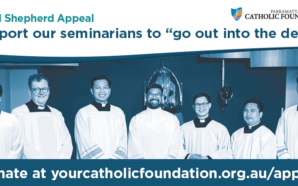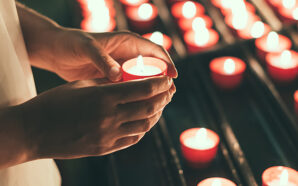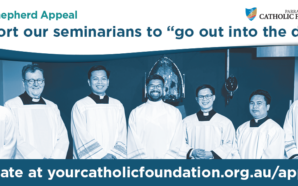Pope Francis has told the College of Cardinals that he had tried faithfully to carry out the mandate given to him when he was elected nearly 10 years ago. The result of the next conclave will hinge on how satisfied members are with the direction he is taking the Church.
After almost 10 years in the job, Francis has just undergone the closest thing a pope has to an appraisal. During two days of intense meetings in the Vatican, the world’s cardinals assessed the landmark reforms he has made to the Church’s central government that were a major part of his brief when they elected him. They have also had a rare opportunity to consider whom they might want to be his successor.
Although talk about an imminent papal resignation is almost certainly premature, the closed-door gathering involving cardinals, patriarchs and senior officials of the Holy See’s Secretariat of State had something of a “pre-conclave” feel. The goal-setting and weather-making phase of this pontificate has been completed; we are now in a phase of implementation and consolidation.
I spoke to several of those who had been inside the Vatican’s Paul VI Hall on 29 and 30 August about what had been discussed and the dynamic of the debates. Although some resistance to Francis flared up towards the end of the second day, most members of the College of Cardinals gave the Pope’s new constitution for the Roman Curia, only the fourth to have been promulgated since 1588, their approval.
There was satisfaction, too, with the progress towards a clean-up of the Holy See’s finances – another issue that was close to the top of the “to do” list when Francis took office. The presence of Cardinal Angelo Becciu in the meeting hall only served to underline the dramatic change: Becciu, once one of the most influential figures in the Curia, is one of 10 defendants in a Vatican corruption trial. It is impossible to imagine a cardinal of his rank being prosecuted for fraud under any of Francis’ recent predecessors.
So much has happened over the last decade. In March 2013, it felt like the Church’s central government was in meltdown. The reform of the Roman Curia and tackling the Vatican’s murky and chaotic finances were among the cardinal electors’ top priorities. Francis has produced a new constitution for the Curia and overhauled the Vatican Bank, the Holy See’s investments policy and financial regulatory system, and given the green light to an unprecedented corruption trial. Christoph Schönborn of Austria was among the cardinals who acknowledged that significant steps had been taken towards finally setting the Vatican’s financial affairs in order.
In his opening remarks at the meeting, Francis referred back to the pre-conclave meetings in 2013, telling the cardinals that he had tried to follow through on the reforms that had been called for at that time. He encouraged his brother cardinals to speak freely. They were broken up into 12 different language groups to help open up the discernment, and then reconvened for plenary discussions in the Paul VI Hall. Francis made sure he was at the morning sessions early so that cardinals could speak to him individually, and he greeted everyone personally. Cardinals Timothy Dolan of New York and Wilton Gregory of Washington DC, and retired Cardinals John Onaiyekan from Nigeria and Michael Fitzgerald from Britain, served as rapporteurs for the four English-language groups.
Slightly fewer than 200 of the college’s 226 cardinals gathered over a sweltering hot and humid two days at a time when the Eternal City is mostly populated by tourists. There was a session in the morning and another in the late afternoon following lunch and a siesta; the two days of meetings ended with a papal Mass in St Peter’s Basilica. Things proceeded smoothly aside from a bit of drama on the first day when seven women dressed in cardinal red and holding scarlet umbrellas stood near the Vatican to protest against the bar on women from ordained ministries. They were detained by police for not having a permit to protest and released several hours later.
The bulk of the discussions inside the hall focused on Praedicate Evangelium (“Preach the Gospel”), the new apostolic constitution on the Roman Curia, nine years in the making and drafted by the Pope and his Council of Cardinals, in consultation with bishops’ conferences across the world. The new constitution, the Pope has stressed, is a reform in the spirit of the Second Vatican Council, opening up leadership roles to laypeople and placing the Curia at the service of the local churches. The Roman Curia should not be a bureaucracy that exists for itself but instead should be there to support the Church’s evangelising mission. The reform has been cultural as well as structural: several cardinals expressed their appreciation for how bishops visiting Roman Curia offices are now more likely to feel they are being listened to rather than reprimanded or micromanaged.
“The general impression is that the majority of the cardinals are supportive of Praedicate Evangelium,” Cardinal Fitzgerald, a former secretary and president of the Holy See’s inter-religious dialogue office, told me. “A new spirit of service is developing, rather than of power.” Crucial to allowing the flourishing of this new spirit is tackling a deeply ingrained culture of careerism, that sees ambitious officials seeking out a patron to ensure their path up the ladder. Under the new rules, priests or laypeople serve for a five-year term – which can be renewed once – and then return to their dioceses.
Some cardinals wondered if term limits would prevent individuals building up enough expertise to get to grips with their role; others argued the new system would encourage previously reluctant bishops to release their most talented priests to serve in the Vatican, knowing they would lose them for 10 years at the most. The term limits also allow for those not up to the job to be sent home. Francis made it clear there was scope for discernment within the constitution’s parameters.
A substantial amount of discussion focused on the declaration in the new constitution that “any member of the faithful” – a woman or a man – could lead a department. This is a novelty: the previous constitution, issued by John Paul II in 1988, ruled that only a cardinal or an archbishop could run one of the curial offices. How would the salaries of lay officials be paid? Would it be better to appoint more laywomen and -men as board members of Vatican departments before putting them in charge? Which specific offices will have lay leadership?
Paolo Ruffini, a former Italian TV executive, is the first lay leader of a Vatican office (the dicastery for communications), and the Vatican department overseeing culture and education is regarded as one that would benefit from lay leadership. However, the cardinals envisage that the key dicasteries of bishops and of clergy and the Church’s supreme court would continue to be led by a bishop or a cardinal.
Behind these practical concerns lies a serious theological issue about church governance. The cardinals wrestled with the relationship between sacred power (sacra potestas) and the Church’s hierarchy. The eminent canon lawyer Fr Gianfranco Ghirlanda argued when Praedicate Evangelium was released that the power of governance in the Church does not come from ordination but from having received a “canonical mission”. Ghirlanda, 80, took part in the meetings – he had been among the 20 new cardinals created by Francis on 27 August.
Ghirlanda’s case is built around the argument that anyone who holds a position of authority in the Roman Curia – be they a cardinal, bishop or layperson – has it delegated to them by the Pope. Nevertheless, his argument about lay governance goes beyond the current provisions in canon law, which state that a layperson can only “co-operate” in the power of governance which rests with those who have “received sacred orders”. Some cardinals are calling for the current Code of Canon Law to be updated.
Cardinal Marc Ouellet, the leader of the Holy See’s Dicastery for Bishops and an internationally respected theologian, made his case by drawing from a long article he wrote for L’Osservatore Romano in July, in which he had pointed to historical precedents, such as the authority given to abbesses, where governance had been separated from ordination. But Ouellet also wanted to develop Ghirlanda’s argument. It wasn’t enough, he said, to argue that “the canonical mission entrusted by the Holy Father is sufficient to establish the power of jurisdiction of every authority exercised in the dicasteries” as this is an overly legalistic view of the Church. Instead, Ouellet argued, all power must be seen as coming from the Holy Spirit, and any mission given to an individual by the Pope should come after the “discernment of a charism”. The cardinal has also proposed a change to the wording of canon law (129:1) on governance.
While most cardinals who spoke supported the new constitution, some opposition was expressed to the changes made to lay governance. Direct criticism of Francis’ vision for a more synodal Church was also voiced towards the end of the meeting. One cardinal argued that the definition of synodality was too vague and needed a clearer definition. In response, another cardinal pointed to the International Theological Commission’s in-depth document on synodality which was published in 2018. The final part of the discussions focused on the less controversial topic of planning for the Jubilee Year in 2025.
A small minority of cardinals remains hostile to the direction of travel of the Francis pontificate. With their well organised and well funded supporters, they have for some time been working on how to secure one of their own as the next Pope. Over the last couple of years, a number of articles and several books on who could be the “next pope” have been written and distributed with the aim of trying to bring about a different outcome to that of the 2013 conclave.
As I walked across a piazza in central Rome, I spotted one of the cardinals who is reported to be less than enamoured with the Francis papacy. He was sitting down for dinner with some friends, one of whom I knew and who waved me over. “Did you enjoy the last couple of days?” I asked the cardinal. “I wouldn’t go that far,” he replied laughing before adding that he’d been in the meetings out of a sense of duty.
For those looking for a candidate to take the Church in a different direction to that set by Francis, some names are emerging. One of them is Cardinal Peter Erdo¨, the Hungarian church leader, an intelligent canon lawyer known to be theologically cautious. One source told me that Erdo¨ has already picked up support from Cardinal Robert Sarah, the Holy See’s former liturgy prefect who clashed with Francis during his time in office. Another name whispered is Cardinal Peter Turkson, the chancellor of the Pontifical Academies of Sciences and of Social Sciences. Although he worked closely with Francis and is an advocate of the Church’s social teaching, he could pick up support from conservatives due to the firmly traditional stances he has taken on moral issues.
Rather than who should be the next Pope, the meetings offered a chance for the cardinals to consider what the priorities for the next papacy should be. The broad-based support for Francis’ reforms suggest that it’s very unlikely his successor will take a radically different course. The synodal journey that has begun will not be abandoned. The Church will continue to accompany spiritually those seeking God while being a prophetic voice for peace, justice and healing in a conflict-ridden world. Addressing the misuse of power in the Church that has led to spiritual, psychological and sexual abuse must remain at the top of the agenda. Hotly contested issues such as women deacons, the failure to bring women into leadership roles, the ordin- ation of married men and the inclusion of LGBTQ Catholics will still be part of the conversation. One topic that the cardinals returned to more than once was the Church’s response to the rapid secularisation of society. While some lamented secularisation, others saw it as an opportunity to reconfigure the Church’s mission, and not something that should be fought against.
It was fitting that the day after the meetings finished, 31 August, marked the tenth anniversary of the death of Cardinal Carlo Maria Martini, a prophetic church leader. Martini, who had often been mooted as a future pope, gave an interview just before he died in which he lamented a “tired” Church that was “200 years behind the times”. He called instead for the Church to undergo a radical conversion, to “try new things”, including offering the sacraments to people in need of healing, including those who had divorced and remar- ried. “How can we liberate the embers from the ash, to reinvigorate the fires of love?” he had asked. A few months after Martini’s death, Jorge Mario Bergoglio was elected, and over the last decade the Jesuit Pope from Argentina has followed much of the Martini vision. The fires are being reinvigorated.
With thanks to the The Tablet and Christopher Lamb, where this article originally appeared.
Reproduced with permission from Christopher Lamb.








